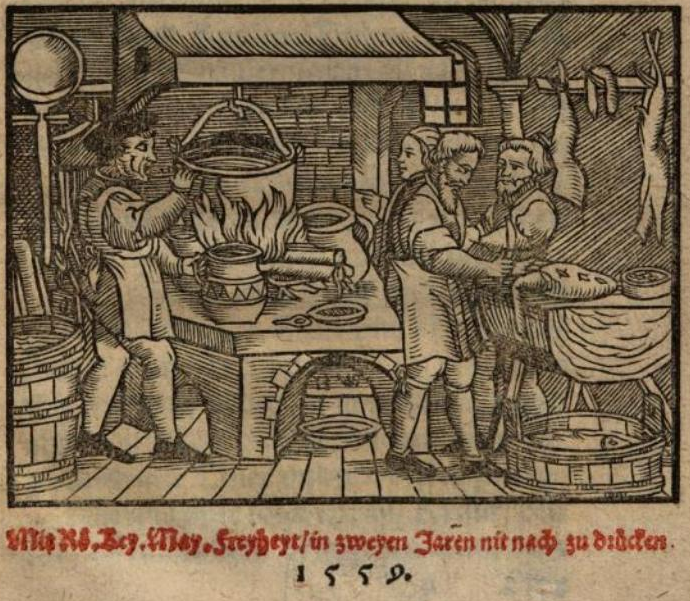I owe thanks to my friend Katrine de St Brieuc who drew my attention to a source I had dismissed as derivative on the basis of an old survey. It pays to look twice – thank you! Here is a recipe to whet the appetite:

3 An autumn spoon dish (Herbstmüß)
Take a handful (each?) of almond kernels, Weinperlin and Rosin (two kinds of raisins) and remove the pips. Blanch the almonds. Take one as much as the other and chop all three ingredients together, not too small, but nicely coarse. Then add caraway, (possibly omission here: Take bread,) grate it and fry (roests) in fat, and pour on Reinfal or another good, common wine and pour that onto the bread that has been fried (geroestet). Let it boil and add sugar. Then take the three ingredients that were chopped, add them to the bread and season it nicely. You must not colour it yellow. It must be seasoned like a Weinmueß. Let it boil down so that it thickens like an oat porridge (haberbrew). Thus you will have a good autumn spoon dish (Herbstmueß)
The source in question is a small printed volume of 50-odd pages, Ein sehr Kuenstlichs und Fuertrefflichs Kochbuch von allerley Speisen auch wie man Latwergen und Zucker einmachen soll unnd sunst von anderen gutten haimlichen Kuensten Ainem jeden im hauß sehr notwendig und nuetzlich zu gebrauchen. It was first printed in Augsburg in 1559 and went through several reprints, but never reached the popularity of the Kuchenmaistrey tradition or Staindl. A comparison with the surviving manuscript sources from Augsburg which date to a slightly earlier time seems promising. The book itself does not appear connected to any of the other print traditions, but the first recipe for wine-based bread porridge is reminiscent of #44 in the recipe collection of Sabina Welser.
This third recipe is interesting for its seasonal association. It could obviously be made at any time, but it is a Herbstmüß, an autumnal dish. The association may lie in the colours as a brown bread porridge is enriched with darker raisins and lighter almonds (we assume the existence of bread, either as a misprint – the caraway – or an omission before the instruction to grate and fry it, which parallels the first recipe). The entire dish is obviously quite luxurious. Raisins – I assume that Weinperlin describes a softer, larger kind and Rosin a smaller, drier one, but am not quite sure yet – almonds and Reinfal, a fashionable wine of the Ribolla gialla grape, were all expensive status ingredients. The instruction to season it like a Weinmueß refers to recipe #1 in this collection which is sweetened with sugar, coloured with saffron, has ginger added and is served strew with Trisanet. I looked at that spice powder in an earlier post.
